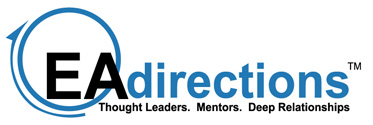Our Teaming Relationship Advisory Subscription is our most common approach for improving your people, processes and program to deliver maximum value. It is built around a Coaching/Mentoring model that is structured to help you and your organization iteratively and continuously improve through on-going, situation-specific guidance delivered in the context of a logical, systematic improvement model.
We believe that EA transformations take time and are not wholly predictable. The availability of a coach/mentor with experience in hundreds of different scenarios will smooth out the journey. Our mission is to help spot inhibitors and correct them as they occur, and identify success opportunities that can be leveraged to accelerate EA transformation.
Overview:
We begin our work with a new client using an approach that is designed to assess and determine where to focus. It is executed in a continuous improvement model: engage, assess, prescribe, and repeat. The most intensive activities are front-loaded into our year together, and tend to even out and become more predictable once we complete a few iterations.
Discovery – We begin by learning about your organization, its people, organization, successes, history, challenges, existing content, etc. Very early on we provide a one-page “wish list” of existing materials we wish to receive and study as part of our client “knowledge base”. We supplement the knowledge we gain from those documents through additional calls with you and key members of your staff and management, followed by the first on-site visit to meet the players and explore additional questions that we typically encounter throughout the discovery phase.
Visioning/Objectives – The key to our approach it to look to the future, at least a year and perhaps a little more, to identify how we want the organization to function, to make decisions, etc. and then identify the changes necessary to achieve that vision. As we work through the discovery and assessment, we formulate a vision for what the organization can become to achieve top performance. That becomes our reference model for the changes to be instituted. We want to be able to leverage your existing work, as well as identify top priorities.
Activities – Once an overall vision is established, the next step is to create an initial shorter-term plan containing the most immediate activities that must be accomplished to move along that path. In the first 3 months we typically organize for effective EA/management processes, building credibility through engagement, and communicating, discovering and targeting a few key projects/initiatives/asset areas that can benefit from proactive involvement, enabling/enhancing appropriate governance processes (ideally light-weight) and communications strategies, determining staff roles/responsibilities and informing/engaging the members, building/enhancing liaisons with the business, establishing an acceptable internal language for these new things we will be doing, etc. We will phase these activities based on a combination of those with biggest impact, that create the best transformational opportunity, and those that will build foundational capabilities. As we proceed, we identify and establish frameworks and other types of models/deliverables/processes that should be created to support the work above, drawn from our own experiences and other industry best practices. The key to success is to be constantly creating and publishing various artifacts and building towards a critical mass of relevant content. A typical evolution culminates in strong engagement with business executives in the context of enterprise-level business architecture deliverables.
Iterate – We begin to iterate immediately upon completion of this first phase, experimenting with trial approaches, adjusting and refining as we proceed forward. The objective is to leverage successes and to abandon ineffective activities as we test them.
Resources – The speed an EA program can improve is directly tied to the resources you have available. Beyond the direct interactions with us, we expect that you and members of your organization will be able to apply the concepts and prescribed recommendations that we advise. This is usually done by modifying existing activities as opposed to reinventing the wheel. It is inevitable, though, that some body of work will need to be created from scratch at various times – frameworks, models, standards, web site content, strategy documents, pictures, etc. – but at all times these must and will be purpose-driven, not created for the sake of creating them.
EA improvement is a journey and finding the pace that fits your goals, yet doesn’t over-tax the available resources, is the key. In our experience, pace and sequencing is critical. So is a willingness to experiment at times, taking some risks when appropriate. Modifying the way people think, analyze and make decisions isn’t always predictable. We have had some clients take 2 months to accomplish a task while another takes 6 or more, but it was the right approach for each of them.
Most of our clients employ our Teaming Relationship. However, we are flexible and can consider other variations. The only differences are the pricing and frequency of onsite and virtual interactions, but the quality of our delivery remains the same.
